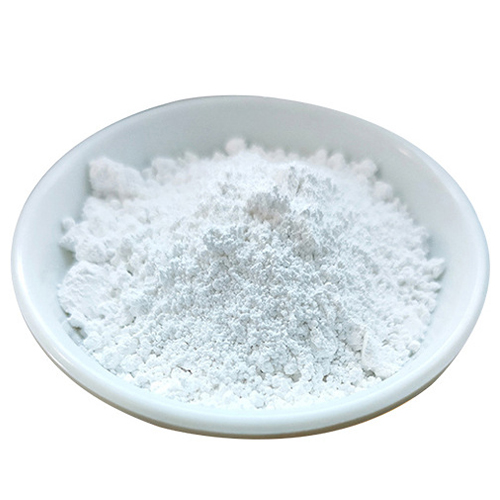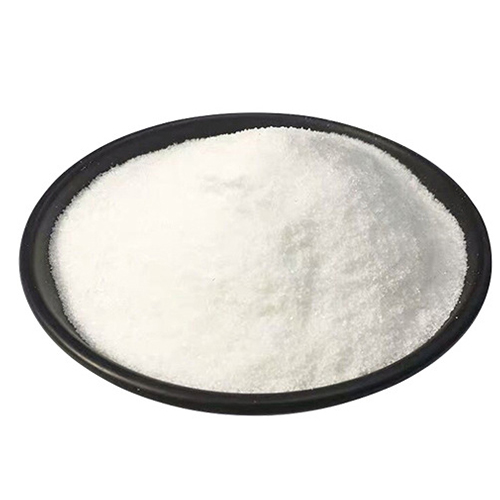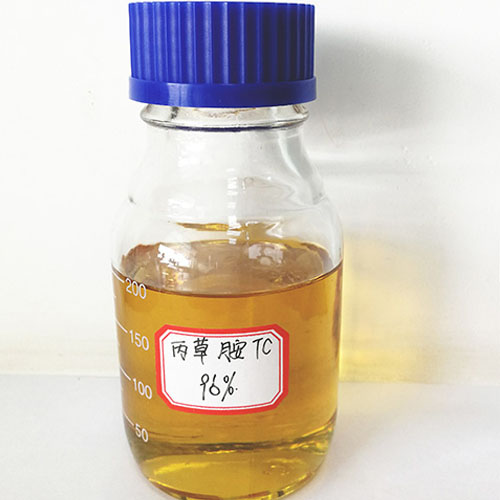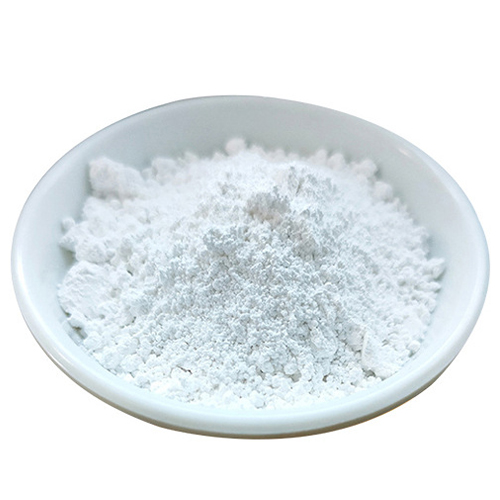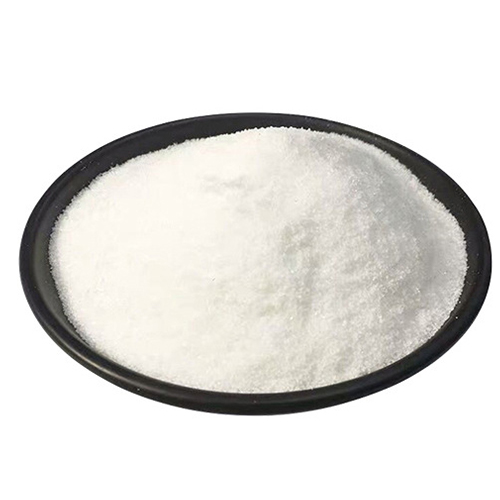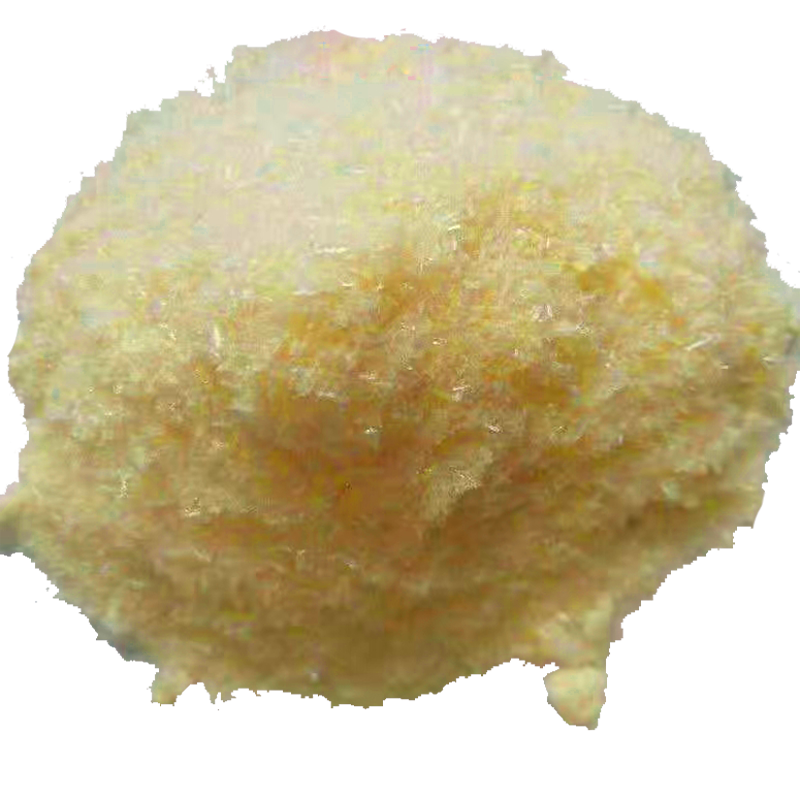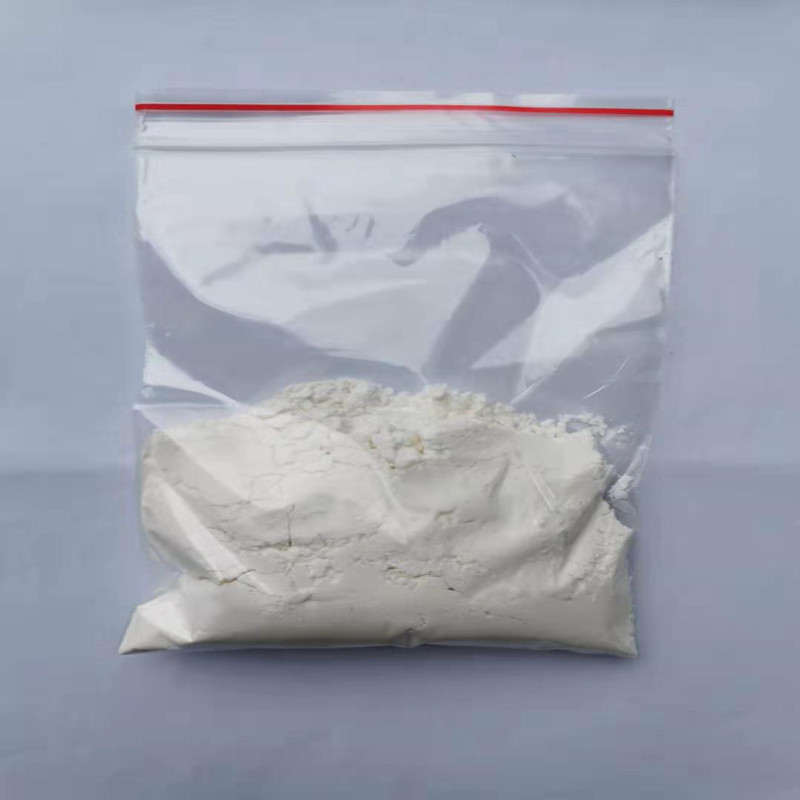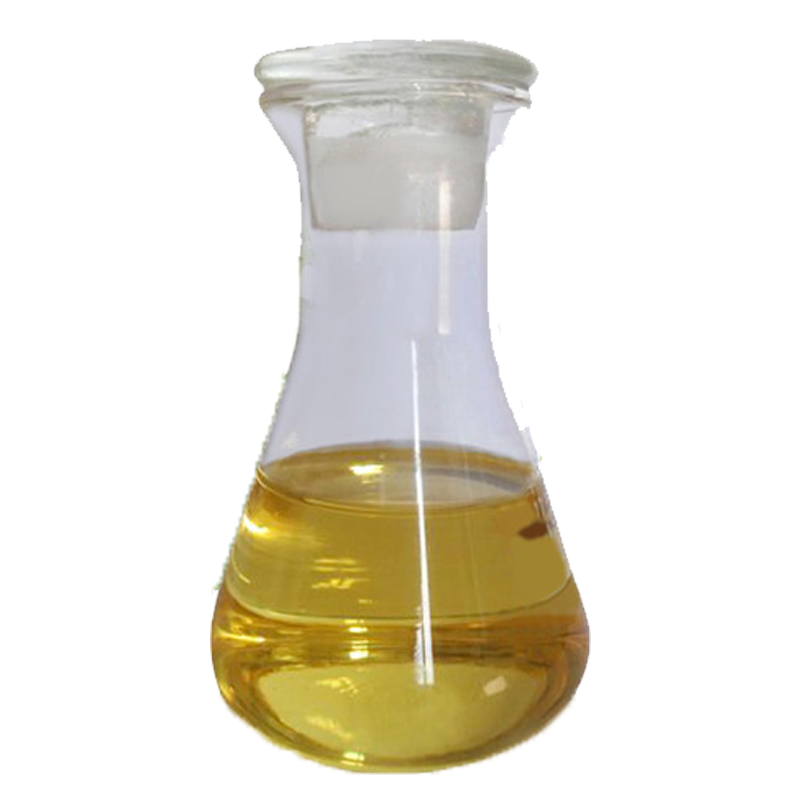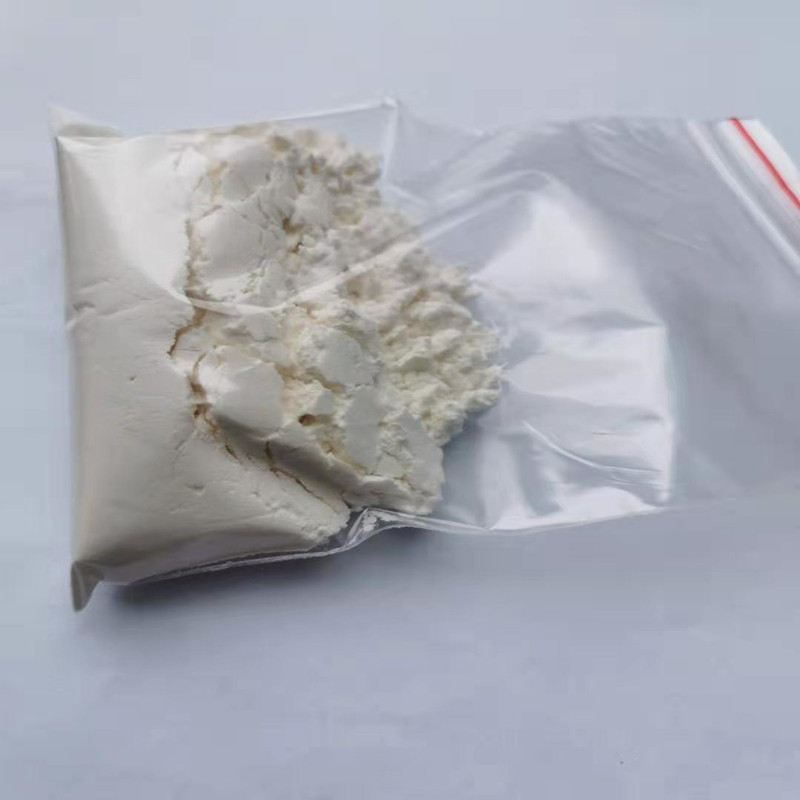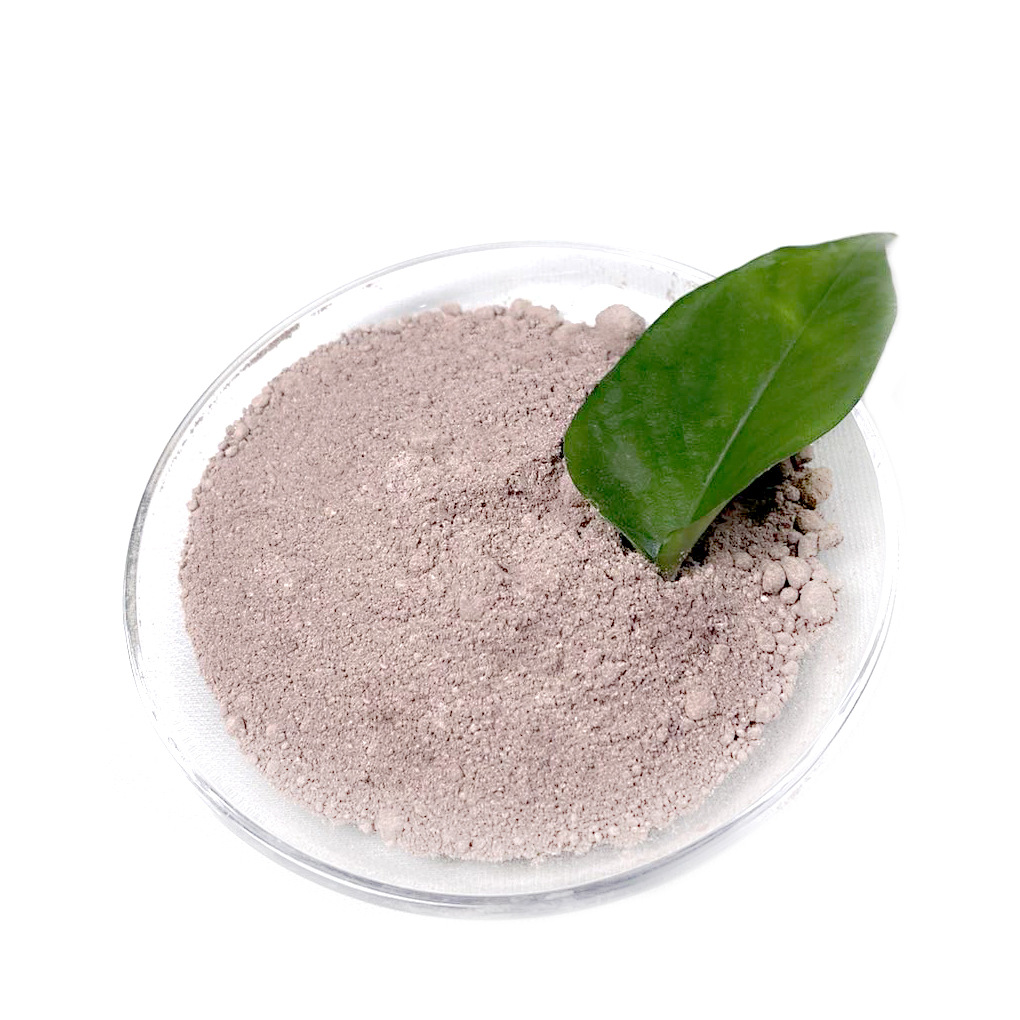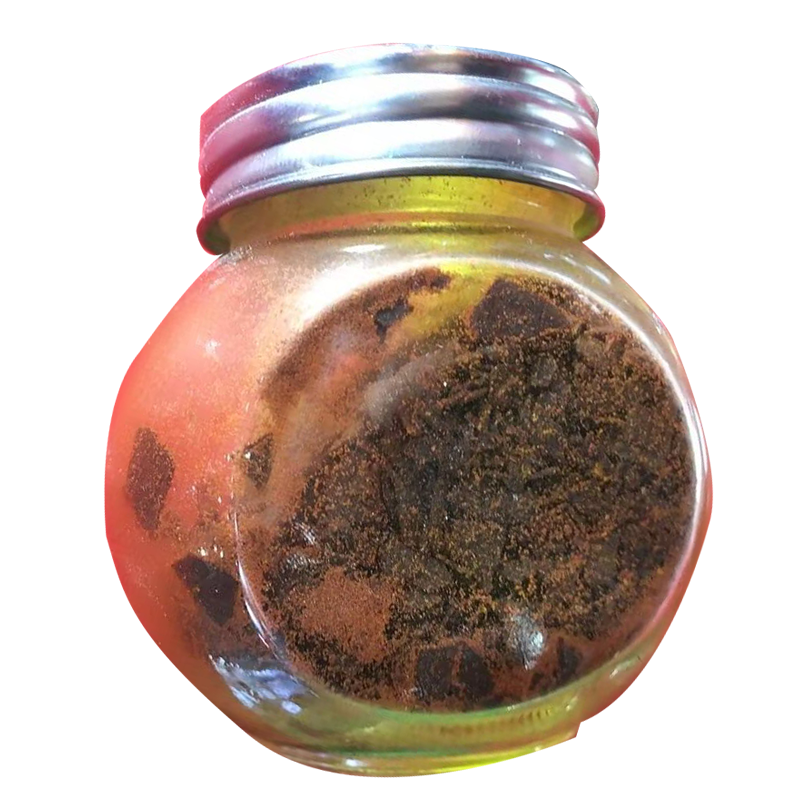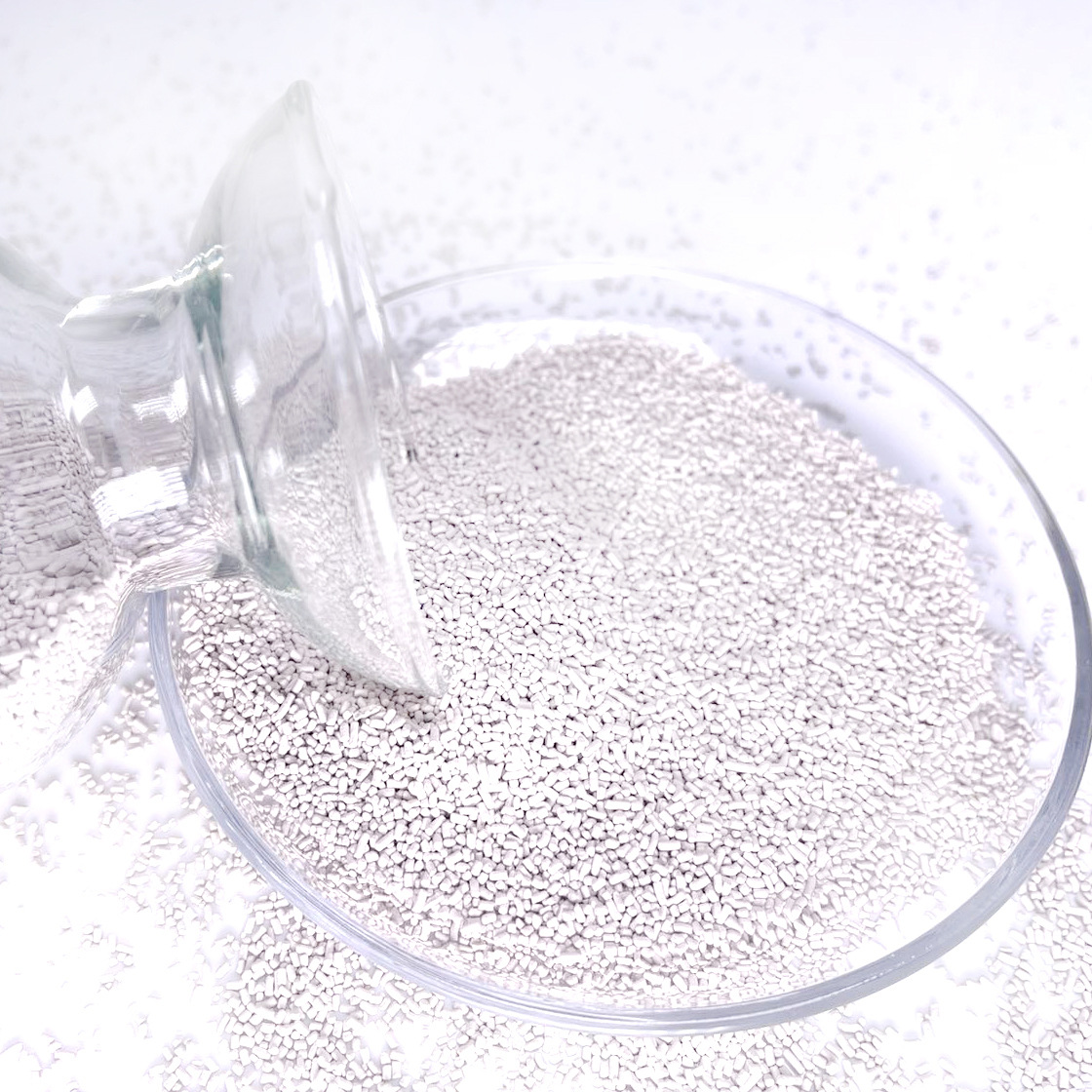Herbicide Mefenacet 98%TC Cas 73250-68-7
Mefenacet is a chemical herbicide belonging to the phthaloanilide group, It can effectively prevent and inhibit gramineous weeds.
Learn More Get a QuoteHerbicide Bensulfuron methyl 96%TC Cas 83055-99-6
Bensulfuron-methyl is a selective pre-emergence and post-emergence herbicide that inhibits the formation of acetolactate synthase (ALS inhibitor). Bensulfuron methyl is selective acting, through foliar and root uptake, by inhibiting biosynthesis of the essential amino acids valine and isoleucine. It stops cell division by inhibition of the acetolactate synthase enzyme. It could decrease the chlorophyll content and inhibit the growth of plant.
Learn More Get a QuoteHerbicide Pretilachlor 95%TC Cas 51218-49-6
Pretilachlor(CAS 51218-49-6) is a synthetic chloroacetanilide herbicide used effectively in annual grasses and broad‐leaved weeds including Echinochloa Beauvois, Cyperus difformis, and sedges in rice and paddy fields.Pretilachlor is appears as a colorless and odorless liquid. It contains an ethoxylated vegetable oil as the emulsifying agent and alkyl aryl sulfonate of calcium salt as the surfactant.
Learn More Get a QuoteHerbicide Glufosinate-ammonium 95%TC Cas77182-82-2
Glufosinate-ammonium is a naturally occurring broad-spectrum herbicide produced by several species of Streptomyces soil bacteria. Glufosinate-ammonium is a non-selective, contact herbicide, with some systemic action.Plants may also metabolize bialaphos and phosalacine, other naturally occurring herbicides, directly into glufosinate.The compound irreversibly inhibits glutamine synthetase, an enzyme necessary for the production of glutamine and for ammonia detoxification, giving it antibacterial, antifungal and herbicidal properties. Application of glufosinate to plants leads to reduced glutamine and elevated ammonia levels in tissues, halting photosynthesis and resulting in plant death.
Learn More Get a QuoteHerbicide Glyphosate 95%TC Cas 1071-83-6
Glyphosate is a non-selective systemic conduction type stem and leaf treatment herbicide.
Learn More Get a QuoteHerbicide Diquat dibromide monohydrate 40%TC Cas 6385-62-2
Diquat dibromide monohydrate is a non-selective contact herbicide, slightly conductive.
Learn More Get a QuoteHerbicide Diuron 97%TC Cas 330-54-1
Herbicide Diuron is a systemic conduction herbicide.controlling annual and perennial broadleaf and grassy weeds in agricultural settings as well as for industrial and commercial areas.
Learn More Get a QuoteHerbicide Butachlor Cas23184-66-9
Butachlor is an amide systemic selective pre-emergent herbicide.Butachlor is an acetanilide weedicide that prevents broad-leaved weeds and grasses from germinating.It's most commonly utilized in rice and wheat fields.Butachlor was developed for the preemergent control of grass and broadleaf weeds in rice and barley.
Learn More Get a QuoteHerbicide Oxadiazon 95%TC Cas 19666-30-9
Oxadiazone, also known as oxadiazone, can exert herbicidal activity under the action of light.
Learn More Get a QuoteHerbicide MCPA SODIUM 98%TC Cas 3653-48-3
MCPA SODIUM is often used as a herbicide in combination with other ingredients.
Learn More Get a QuoteHerbicide Pendimethalin 96%TC Cas 40487-42-1
Pendimethalin is a contact-killing soil sealing treatment agent.
Learn More Get a QuoteHerbicide Rimsulfuron 95%TC Cas 122931-48-0
This product is a sulfonylurea herbicide, a branched-chain amino acid synthesis inhibitor, and a selective post-emergence herbicide.
Learn More Get a QuoteHerbicides are also called herbicides. Chemicals that can kill weeds or harmful plants without affecting the normal growth of crops. It can be used to control weeds in farmland or kill weeds or shrubs in non-agricultural land. According to their action characteristics, they can be divided into selective herbicides and total herbicides. Selective herbicide means that within a certain dosage and concentration range, it can selectively kill certain types of plants while harmless to other types of plants.
Features of Herbicides
1 The weeding speed is fast and the efficiency is high. Weeding with back-mounted or motorized sprayers is several to hundreds of times faster than manual weeding, and aerial spraying can spray hundreds of hectares of weeding area every day.
2 Chemical weeding is beneficial to the integrated control of pests and diseases. Chemical weeding can eliminate weed damage in time, remove and cut off some intermediate hosts, overwintering places, virus transmission hosts, and hobby hosts of some pests, thereby reducing the damage of pests. For example, by eradicating the wheatgrass, wild oats, crabgrass, chickweed, etc., the intermediate hosts of wheat aphids and digemys and the vectors of yellow dwarf and head blight will be removed or cut off.
3 The weeding effect is good, and the application of pesticides is timely. One application of pesticides can solve the weed damage, and no need to be pulled out by humans. Using 12.5% mulch grass can control peanut, soybean, and onion field monocotyledonous weeds, and the control effect can reach 95% to 100%; using 45% mesocampus can control soybean weeds The effect can reach 95% to 100%, and the effect on vicious weeds Abutilon, morning glory, sedge, etc. can reach 90% to 95%. After spraying, the weeds are eliminated in the germination or primary stage, and the control of weeds between plants is also relatively clean.
4 The effect of increasing production is remarkable. Chemical weeding generally increases production by about 10% compared to manual weeding.
5. It can overcome the disadvantages of manual weeding and mechanical weeding due to rainfall. Manual weeding and mechanical weeding cannot be carried out in rainy days. Chemical weeding after rainfall just meets the requirements of herbicides for moisture and moisture, and fully exerts the weeding effect of herbicides.
6 It is conducive to the reform of the farming system. Such as no-tillage, less-tillage, aerial seeding, and reducing plant-to-row spacing to increase density. Only chemical weeding can completely solve grass shortages and protect crops from harm, otherwise it is difficult to implement by manual removal.
7 is conducive to mechanization. For example, mechanized pesticide application is used in the control of large areas of weeds, the weeding effect is good, the weeds are less, and it is more conducive to mechanized harvesting.
Chemical weeding requires leveling of the land. Uneven ground is not only inconvenient to operate, but also increases the spraying area and wastes chemicals. Secondly, the land area calculation must be accurate, and the dosage calculation must be accurate, so as not to cause drug damage or fail to achieve the expected effect. It should be carried out in sunny and windless weather, especially on sunny days after rain, when the ground is wet, which can improve the efficacy of most chemicals; if the weather is long and dry, it can be combined with spray irrigation.
Applications of Herbicides
1. All localities should choose effective herbicides according to the most local weed species. For example, in gramineous lawns, Pingkuojing, Giant Star, Bicaojing, Dicaojing, Trisulfuron-methyl, and Baijia Mixture are effective in controlling broad-leaved weeds, while metsulfuron-methyl and chlorsulfuron (currently banned) have a long residual period, which has a great impact on the soil and the environment. If the planting of broad-leaved lawns (seedlings) is replaced, serious phytotoxicity will occur. When there are more gramineous weeds in cool-season grass lawns such as bluegrass, fescue, ryegrass, and bentgrass, the use of grass weeds has an ideal effect.
2. Choose safe and suitable herbicides according to different lawn types. Different lawn species have different tolerances to herbicides. For example, dimethyltetrachloramine salt is safe for grass lawns to control broad-leaved weeds; it is safer to treat leguminous broad-leaved lawns with Bentasone; it is safe for lawns to control grass weeds in broad-leaved lawns with Jingwen kill; it is safe to use pingkuojing to control broad-leaved weeds in grass lawns, and it can also eliminate a variety of malignant weeds, such as hollow lotus seeds. Another example is to prevent and control gramineous weeds in warm-season grass lawns such as zoysia and bermudagrass. Elimination of grasses is safe for zoysia lawns, but it is seriously poisonous to bermudagrass turfgrass. The herbicide Jinbaixiu (25% sulfasulfuron-methyl water-dispersible granule) used to control grass weeds in bermudagrass lawns is highly safe to zoysia and bermudagrass, but it is seriously poisonous to turf grasses such as bluegrass, festuca, ryegrass and bentgrass.
3. Each herbicide has a certain herbicidal spectrum and must be selected in a targeted manner. For example, dimethyltetrachloride is very effective in controlling Artemisia sobani and wild rapeseed, but the effect of controlling pig vines is not obvious, or extremely poor.
4. Different growth stages of lawns have different resistance to herbicides. Transplanted lawns can be treated with herbicides during their lawn formation and growth period. For live lawns, use herbicides before sowing, and the residual period must be considered, otherwise the emergence rate of grass seeds will be affected. Herbicides are used for closed weeding after sowing and pre-emergence of lawns, which has high requirements for the safety of herbicides. Lawns before the 5-leaf stage (within 50 days after seedling) belong to the young lawn stage, and the use of pesticides is also very special, which is subject to relatively large limitations. However, more herbicides are suitable for direct-seeding lawns that are more than 50 days after seedlings.
5. Different growth stages of weeds require different herbicides. Before weeds with 5 leaves, the drug resistance is weak, the dosage is small and the effect is good, and the dosage of more than 7 leaves increases, the effect decreases, and the safety factor for the lawn decreases; the weed growth stage, especially after the weeds set seeds, the herbicide effect is even less obvious.
6. In terms of dose control, we can refer to a guideline, that is, to control different weeds can increase the amount of use, while the same kind of weeds must be strictly controlled within the recommended amount. That is, the dosage of herbicides for controlling heterogeneous plants can be increased. Generally, an increase of less than 3 times will not cause harm to the herb, but it can be used to control serious damage and older heterogeneous weed plants by increasing the dosage. For the control of similar plants, the dosage should not be increased at will, otherwise serious damage will be caused due to exceeding the detoxification ability of the herbal medicine.
7. Other factors: such as the drift of herbicides, the impact on other flowers in the environment; whether the residue of herbicides will affect the next crop of garden plants; places where people often move, such as golf courses, sports fields, park lawns, green lawns, etc., use herbicides with low toxicity, and the number of spraying herbicides should be as small as possible.
The price of herbicides
Usually, the price of herbicides will be affected by raw materials, market environment, research and development costs, etc. If you want to know the price of herbicide, please contact us to initiate an inquiry.
Tel: 13563082345 Email: sales@agripesticide.com
Supplier of herbicides
Agripestcide is a professional agrochemical manufacturer, providing herbicides, insecticides, microbial fungicides, plant growth regulators and other products. If you are looking for herbicides, please feel free to contact us for the latest price.

